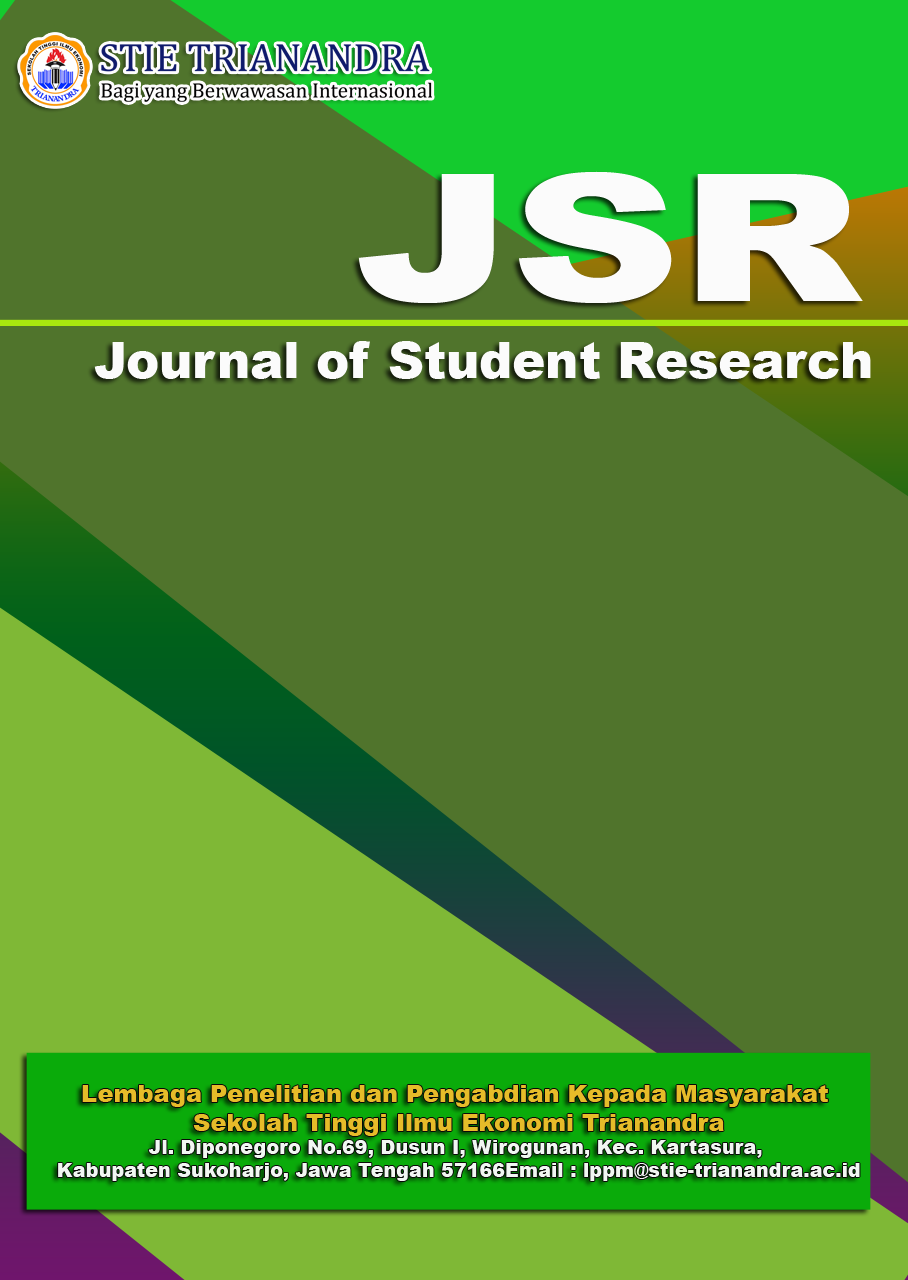Penerapan Teori Belajar Behavioristik Dalam Pembelajaran PAI di SDIT Cahaya Hati Bukittinggi
DOI:
https://doi.org/10.55606/jsr.v2i3.3001Keywords:
Keywords: Application, Learning Theory and Behavioristic Learning TheoryAbstract
Abstract: Behavioristic theory is important to study in the learning process, because this theory is easy to apply in educational learning in Indonesia. Learning theory is a combination of interconnected principles and explanations of a number of facts and discoveries related to learning events. This research reviews behavioristic theory and its application in learning. The aim of this research is that it can be applied in PAI learning, apart from educating cognitively, psychomotorically, it can also guide students' behavior in a better direction. The method used by the author is descriptive qualitative which attempts to explain the application of behavioristic theory so that it is able to produce changes in behavior towards students. Through this research, the author tries to reveal the application of behavioristic theory in PAI learning at SDIT Cahaya Hati Bukittinggi as well as changes in behavior that occur in students using a behavioristic theory approach. Based on the research results, it was found that the application of behavioristic learning theory to PAI learning was carried out in several stages, namely, stimulus (encouragement for the delivery of material/motivation from the teacher), response (response from students), while reinforcement/reinforcement was carried out by the teacher using the reward method, punishment, and reinforcement.
References
Anggraini, S., Siswanto, J., & Sukamto, S. (2019). Analisis dampak pemberian reward and punishment bagi siswa SD Negeri Kaliwiru Semarang. Mimbar PGSD Undiksha, 7(3).
Daud, W. M. N. W., & Nor, W. M. (2003). Filsafat dan Praktik Pendidikan Islam Syed M. Naquib Al-Attas. Bandung: Mizan.
King, L. A. (2010). Psikologi Umum: Sebuah Pandangan Apresiatif. Salemba Humanika.
Langgulung, H. (1991). Asas-asas pendidikan Islam. Dewan Bahasa dan Pustaka.
Ma’Luf, L. (1986). al-Munjid fi al-Lughah wa al-A’lam. Beirut: Dar Al-Masyriq, 60.
Najati, U. (2002). Jiwa Manusia Dalam Sorotan Al-Qur’an. CV, Cendeki a Sentra Muslim.
Nizar, S. (2002). Filsafat pendidikan Islam: Pendekatan historis, teoritis dan praktis. Ciputat Pers.
Purwa Atmaja Prawira, P. A. (2012). Psikologi Pendidikan dalam Perspektif baru. Ar-Ruzz Media.
Putrayasa, I. B. (2013). Landasan Pembelajaran. Singaraja, Bali: UNDIKSHA Press. Tersedia Secara Online Di: Http://Pasca. Undiksha. Ac. Id/Media/1227. Pdf [Diakses Di Kota Malang, Indonesia: 2 Maret 2017].
Rozi, M. A. F. (2017). Strategi Memperkokoh Jantung Pendidikan Islam. Ta’allum: Jurnal Pendidikan Islam.
Saufiqi, A. (2022). Implementasi teori behaviorisme Ivan Pavlov dalam membentuk pola perilaku Islami pelajar di Bengkulu Tengah. Nuansa Jurnal Studi Islam Dan Kemasyarakatan, 15(1), 61–70.
Soesilo, T. D. (2015). Teori dan Pendekatan Belajar: Implikasinya dalam Pembelajaran. Yogyakarta: Ombak (Anggota IKAPI).
Suyadi, S. (2021). Penerapan teori belajar behavioristik Skinner dalam pembelajaran baca tulis Al-Qur’an. Ulumuddin: Jurnal Ilmu-Ilmu Keislaman, 11(2), 177–192.
Syah, M. (2011). Psikologi Pendidikan. Remaja Rosdakarya.
Untung, S. (2005). Muhammad Sang Pendidik. Semarang: Pustaka Rizki Putra.
Wahab, R. (2016). Psikologi belajar. Rajawali Pers.
Zamzami, M. R. (2015). Penerapan Reward and Punishment Dalam Teori Belajar Behaviorisme. Journal Ta’limuna.









